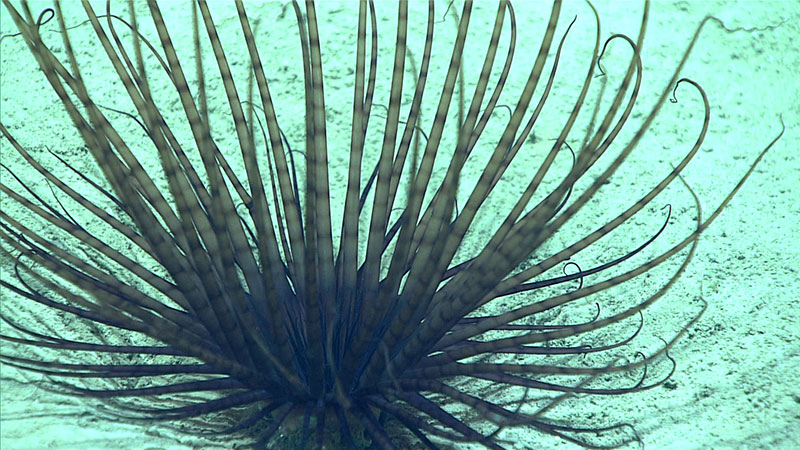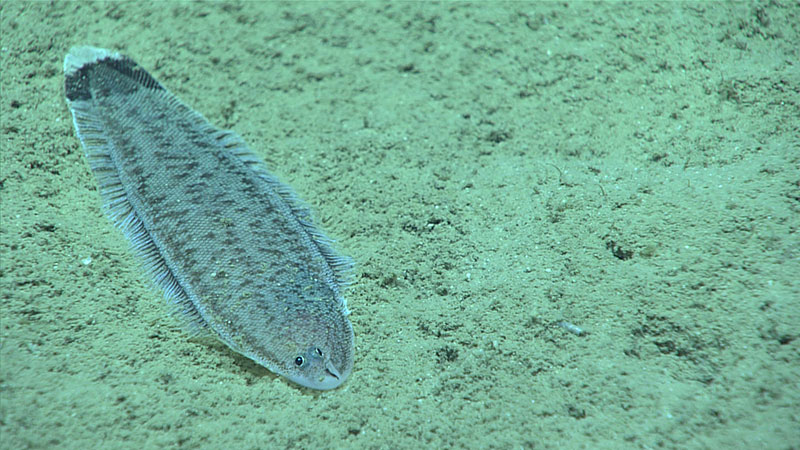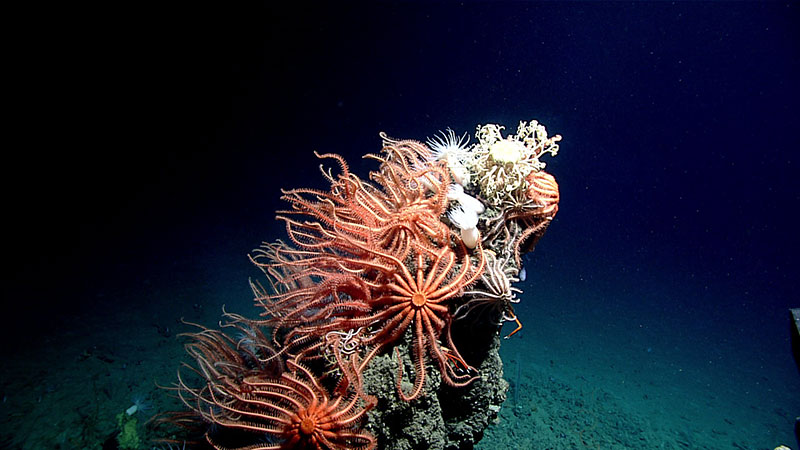-

A cerianthid burrowing anemone builds a tube in the sediment out of secreted fine threads and mucus, which it can withdraw rapidly into and completely for protection. Image courtesy of the NOAA Office of Ocean Exploration and Research, Gulf of Mexico 2017. Download larger version (jpg, 1.3 MB).
-

A cynoglossid tonguefish (Symphurus sp.) related to flounders, soles, and halibut, lies on the sediment. It uses the individual rays of the fins along its sides to creep over the seafloor like a millipede uses its many legs on land. Image courtesy of the NOAA Office of Ocean Exploration and Research, Gulf of Mexico 2017. Download larger version (jpg, 1.0 MB).
-

The top of a craggy pinnacle about two meters tall supports a dense community of orange, suspension-feeding, brisingid sea stars and, at the very top, a gorgonocephalid basket star. Image courtesy of the NOAA Office of Ocean Exploration and Research, Gulf of Mexico 2017. Download larger version (jpg, 1.0 MB).